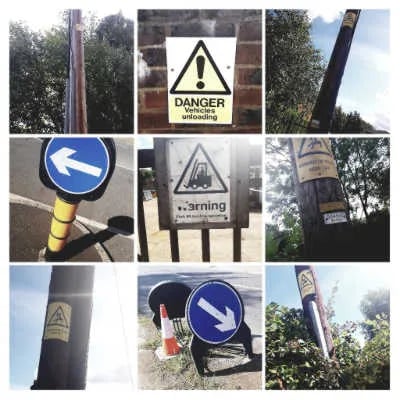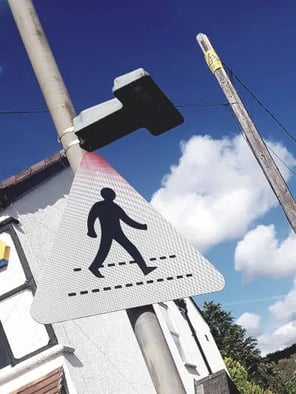CES Hire Toolbox Talk Tuesdays: Safety Signs In The Workplace
How Safe Are You?
With this week’s Toolbox Talk Tuesday focusing on safety signage in the workplace, I was hyper aware of the signs around me. I took myself off for a quick 20 minute stroll to investigate this further. I hasten to add this is a walk I have done easily over 100 times and I’ve never been particularly aware of the signs. If anything, the only signs I’d pick up are the estate agent boards and would later comment to my partner, you’ll never guess what house is on the market! Never once have I commented, well that was a dicey walk, I was playing with fire there!

Clearly I was skating on thin ice (well would have been if I didn’t spot the ice warning sign; much needed in the middle of Summer!). As I strolled along I spotted at least 40 Danger of death signs, interestingly placed well above eye height on the electricity pylons, I’d imagine the danger only really occurs if you’re planning to shimmy up the pole and play with the electricity cables (not advised!!) so I’ll let them off for these signs not being so visible. Apparently Summer time is also the time to dig up roads as I spotted a huge numbers of road works with of course an abundance of signage to go with them. All the signs I glimpsed were of course there to make everyone in that area aware of the potential hazards or to pass on relevant information. Up until now they had just become wallpaper as I was either so used to seeing them or just oblivious since there are so many.

We can definitely learn from this in the workplace. Start by counting how many safety signs you have? How many of them have become wallpaper? Are there any signs that no longer serve their purpose as hazards have changed? Does your whole team know what they all mean? In places of construction, signs are standardised (in fact across the EU) so everyone is well aware of the message as they move from site to site. Health and Safety (signs and signals) Regulations (1996) have colour coded the signs that apply to all places of work so it couldn’t be easier to become familiar with such signs. As an employer it is your duty to ensure everyone knows the meanings behind the signs Try out our safety signage quiz to see how your team fare in their knowledge of safety signs in the workplace.
The Five Types Of Safety Sign Are:
- Prohibition signs: Round and red with a diagonal red line. Inform you of things you must not do and stop behaviour likely to increase or cause danger e.g. no access for pedestrians.
- Warning signs: Triangular and yellow with black edging. Warn you of a hazard or danger e.g. toxic material or overhead load.
- Mandatory signs: Round and blue with a white pictogram. Inform you of things you must do e.g. safety gloves must be warn. Mandatory signs are aleays accompanied with the word ‘must’ (should or could is not good enough!).
- Emergency escape or first aid signs: Rectangular or square and are green. Give information on first aid, emergency exits or first aid facilities e.g. location of eye wash station.
- Fire-fighting signs: Rectangular or square on a red background. Indicate the location of the facilities associated with fire safety e.g. location of fire extinguisher.

Unlike some of the signs I saw on my walk (see photo), you are responsible for maintaining the signs on your site (I’m guessing the highways agency are a little stretched at the moment and I’m not surprised with all the roadworks going on!) Signs should be kept clean, be in clear view (not obstructed that delivery that you ‘popped’ down and a week later is still there!) and be visible in terms of being illuminated so if there were a power failure they are still capable of their function. You should be taking into account your risk assessments when placing signs in the workplace. Has the risk been controlled enough by other means e.g. your safe processes of work or PPE? It is crucial to remember that safety signs are not a replacement for safety measures and we shouldn’t be reliant on them. Many things we do are performed safely without the need for a reminder in a safety sign; for example, I don’t rely every morning on a sign in my home to say ‘must wear sunscreen’ in order to make this safe decision. Similarly when I went on my ‘dangerous, dicing with death’ walk I was capable of making safe decisions without the need for signs.
So this week, as you go about your day to day life, be more aware of the safety signs around you and take particular note of any safety signs if you are heading out to a new site. Whilst Bob’s house being on the market might be the sign you spot first and might win you nosiness points with the wife, it’s not going to save your life!
Click here for the full Safety signs and signals. The Health and Safety Regulations 1996 as a downloadable copy.

